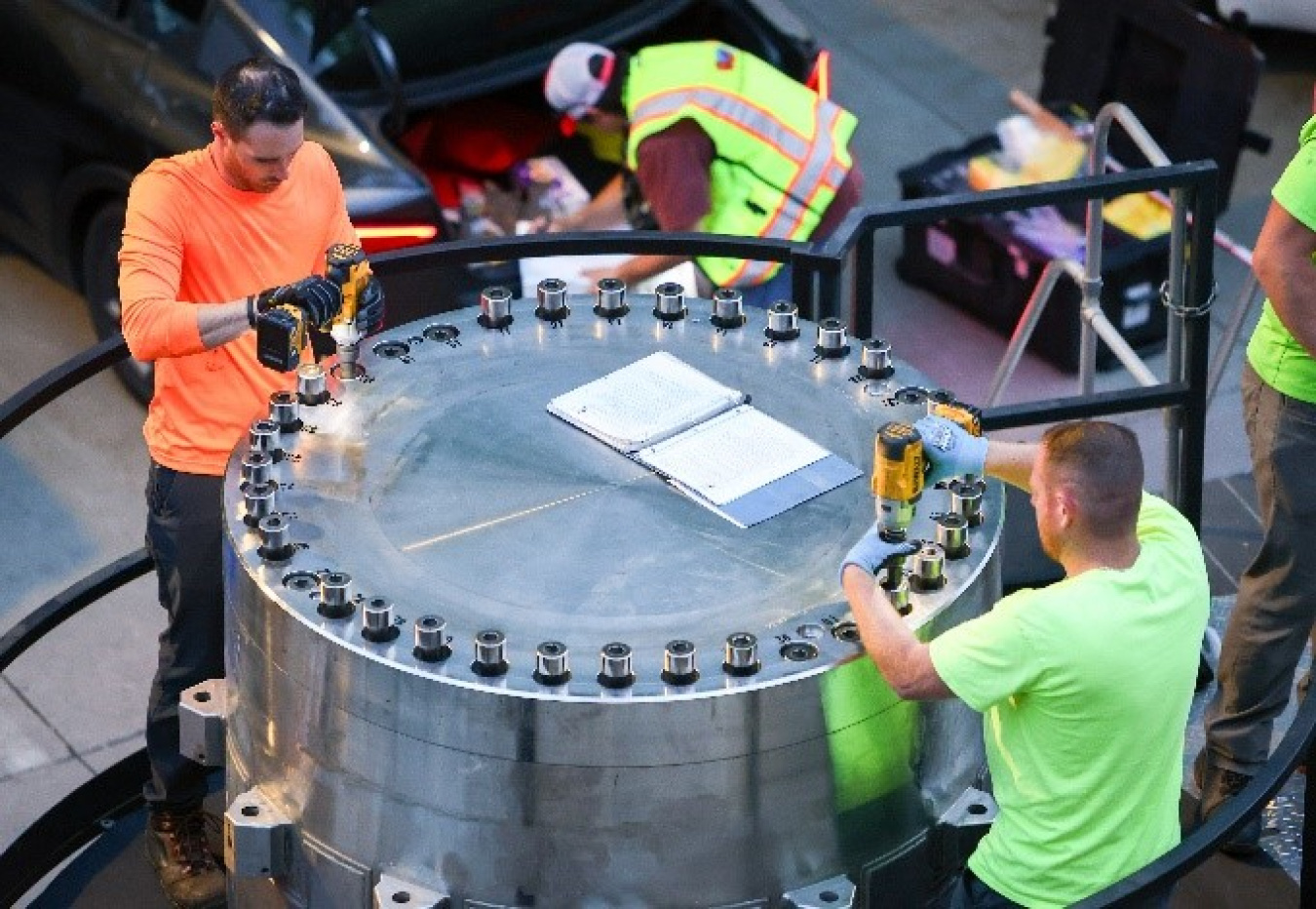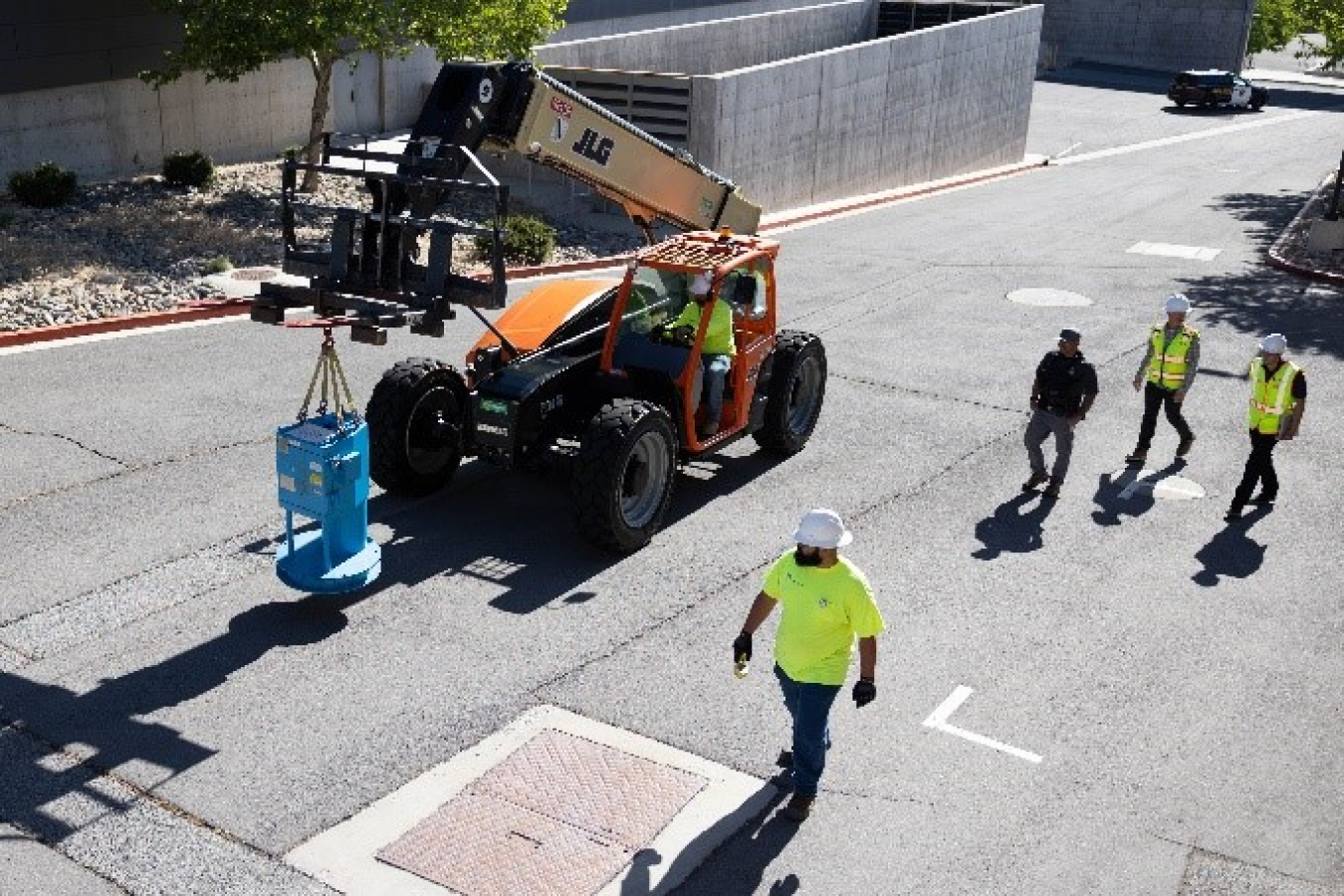The achievement significantly enhances radiological security and underscores NNSA's commitment to keeping America safe from radiological terrorism.
National Nuclear Security Administration
June 10, 2025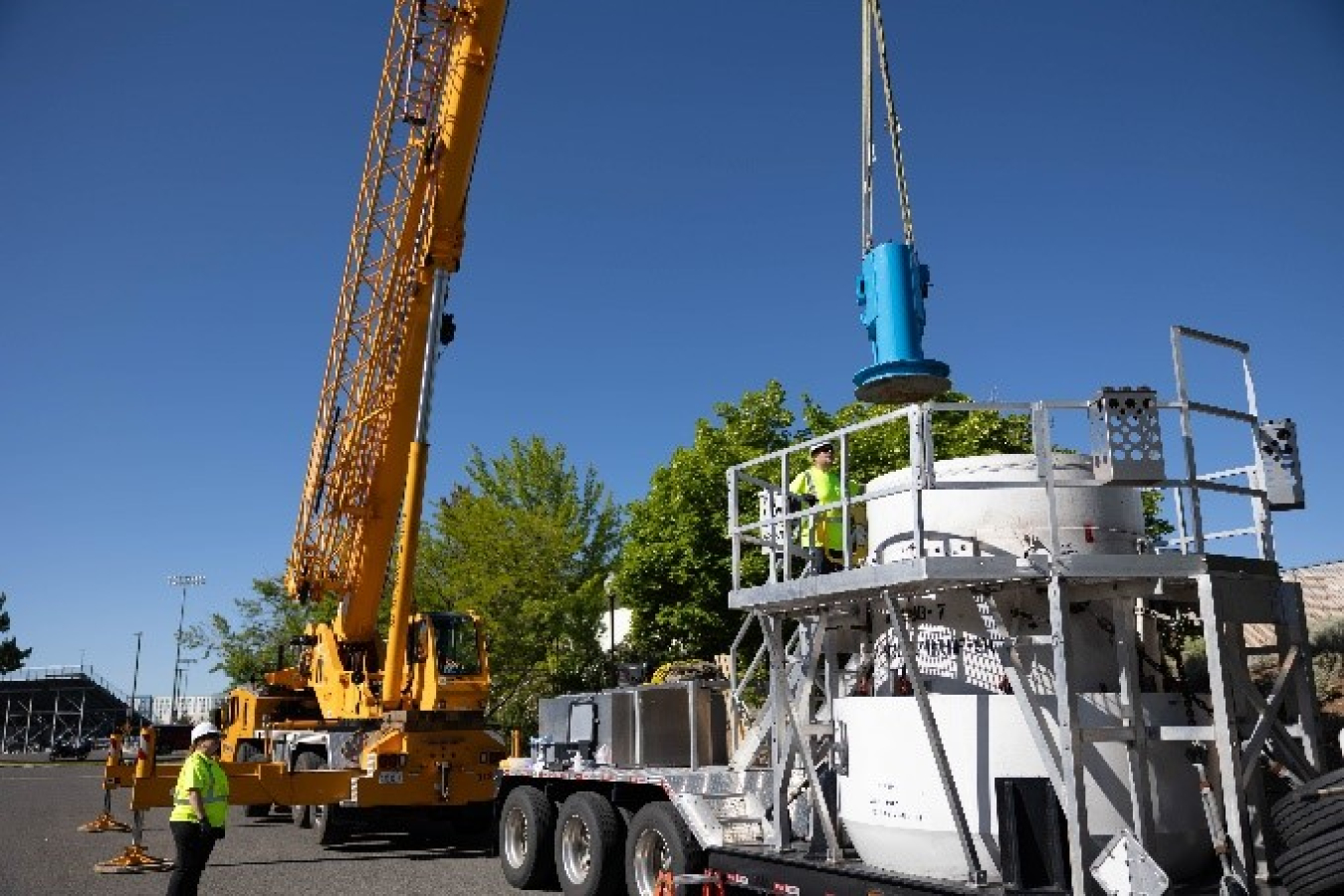
Last month, NNSA’s Office of Defense Nuclear Nonproliferation (DNN) removed the last cesium irradiators from the states of Iowa and Nevada. This achievement, made possible through strong partnerships with state and local stakeholders, significantly enhances radiological security and underscores NNSA's commitment to keeping America safe from radiological terrorism.
Irradiators containing radioactive cesium-137 are used for important purposes like treating blood and for cancer research. However, in the wrong hands, the radioactive material in the machines could be used to create a “dirty bomb.” By removing these irradiators, NNSA helped Iowa and Nevada permanently eliminate this risk.
“NNSA is committed to enhancing national security by working with states to remove high-activity radioactive sources that could be used in harmful ways against our communities,” said Christine Bent, NNSA’s Assistant Deputy Administrator for Global Material Security. “These partnerships are essential for the safety, security, and prosperity of America.”
On May 7, NNSA’s Los Alamos National Laboratory completed the removal of the last cesium irradiator from the state of Iowa. The removal was part of DNN’s Cesium Irradiator Replacement Project (CIRP). CIRP encourages organizations to replace their cesium irradiators with viable alternatives that don’t use radioactive material, reducing both operational costs and security risks.
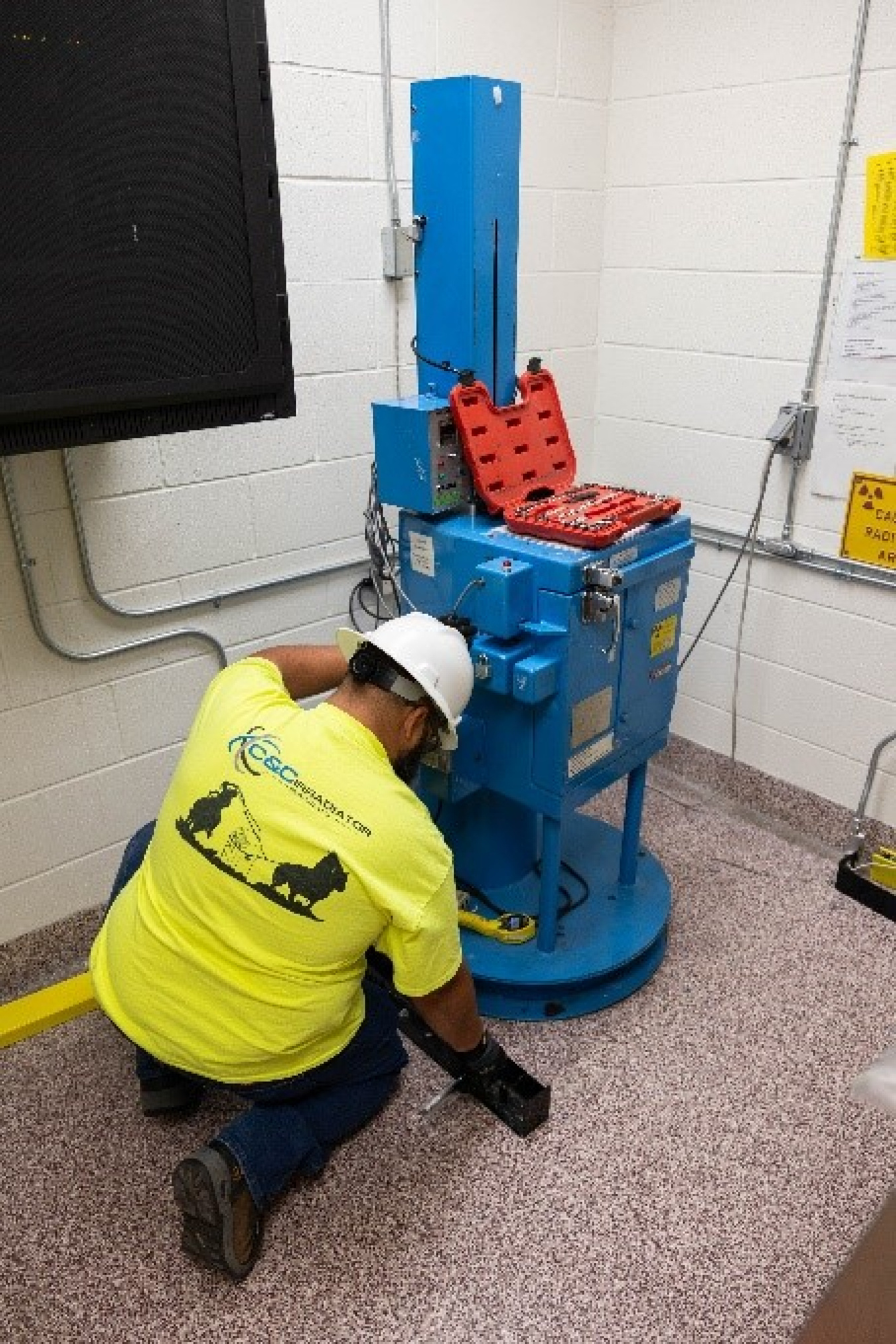
“The safe and successful removal of the last cesium irradiator in Iowa is a major milestone,” said Robert Kruse, State Medical Director and Division Director of Public Health at the Iowa Department of Health and Human Services. “This enhances public safety in Iowa by preventing radiological threats and advancing long-term security and contributes meaningfully to national radiological security efforts.”
NNSA also achieved a similar milestone in Nevada, in collaboration with the University of Nevada, Reno. The partnership between the university and NNSA began in 2014, included multiple collaborations over the years, and culminated in the removal of the state’s last cesium irradiator on May 22, conducted by Idaho National Laboratory. Thanks to prior removal efforts, Nevada is also free of cobalt-60 irradiators, which use another radioactive material that poses a significant radiological terrorism risk.
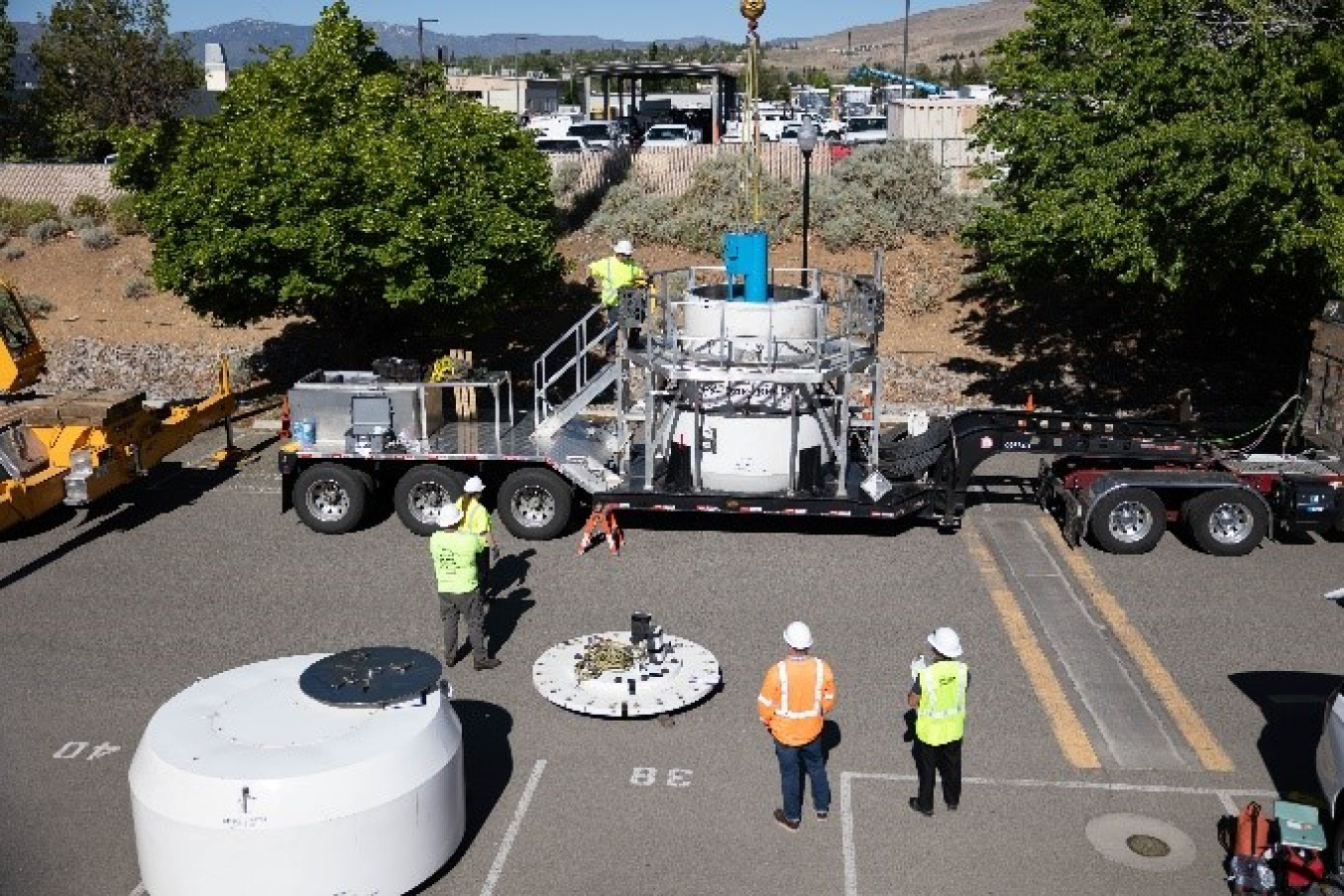
“Our partnership with the NNSA, and the resources, support, and expertise they provided, were essential to advancing our community’s radiological security,” said Mridul Gautam, Vice President for Research and Innovation at the University of Nevada, Reno. “We value our partnership with NNSA and are proud to protect our university, our state, and our country.”
John Follette, Manager of the Radiation Control Program at the Nevada Department of Health and Human Services gave the following statement: “We would like to extend our heartfelt appreciation to NNSA. Together, we are making significant strides toward enhancing public safety and ensuring a more secure environment for all.”
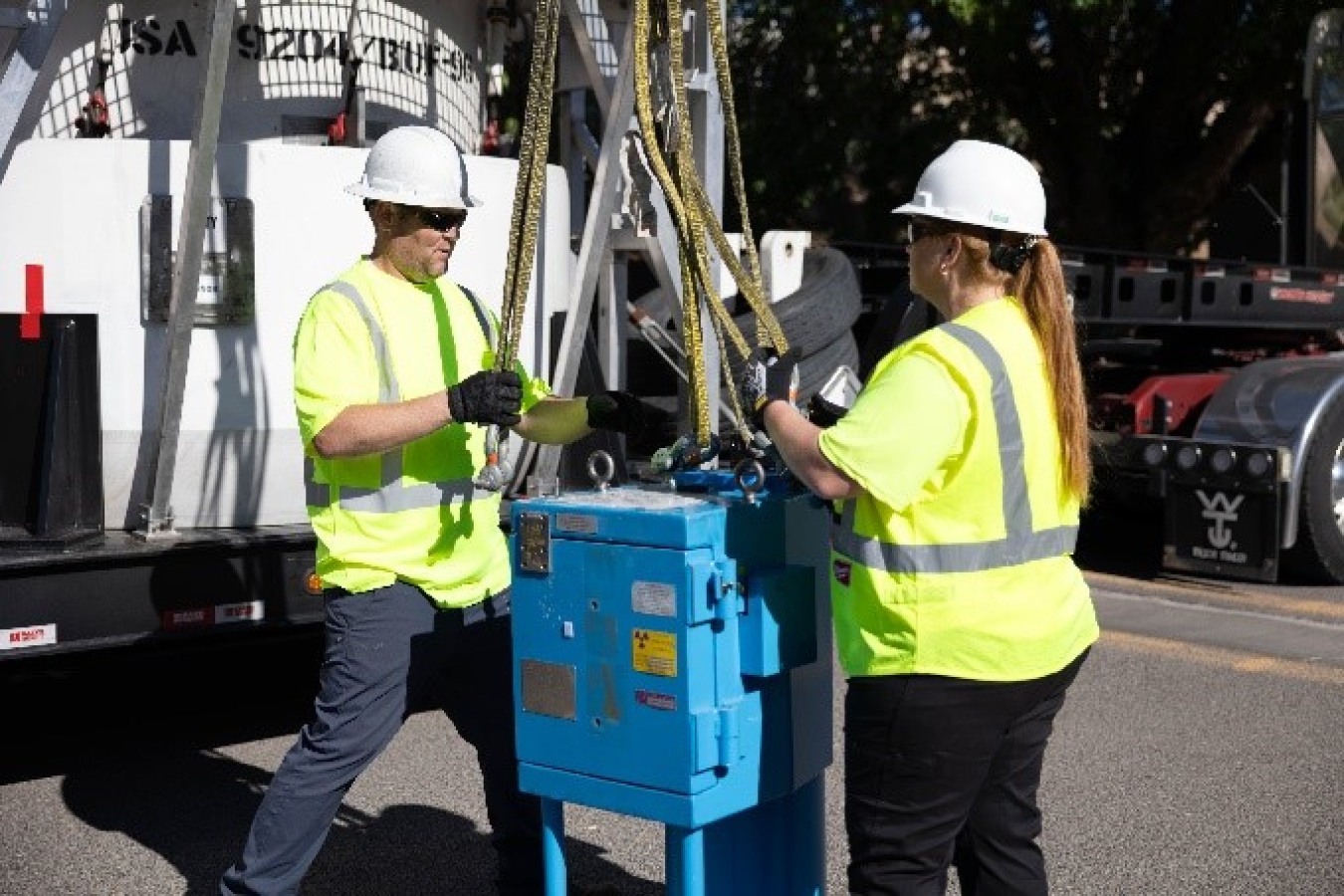
DNN’s Office of Radiological Security protects the United States from radiological terrorism by eliminating high-risk radioactive materials, driving the transition to more secure alternatives, and partnering with government, law enforcement, and industry. These efforts safeguard American interests and promote a safer, more secure, and more prosperous America.
To learn more about this mission and how you can keep your community and country safe, please contact: ORSinfo@nnsa.doe.gov.


